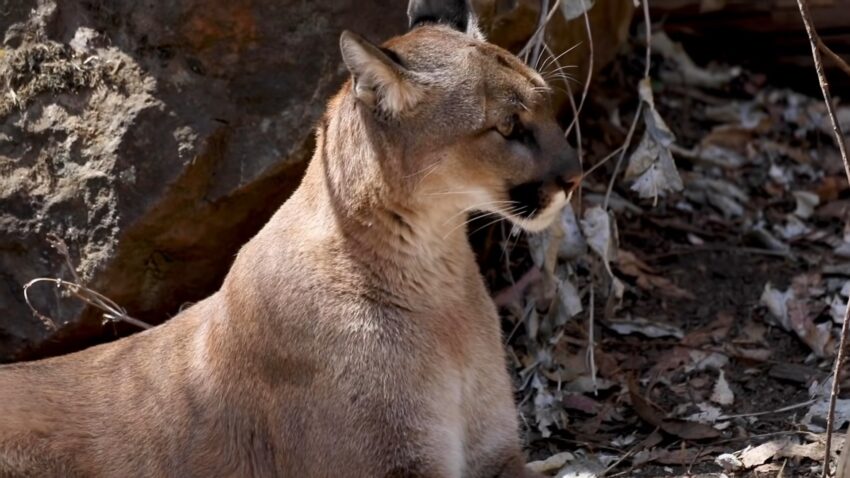In North America, six wild cat species exist, with two of them classified as “big cats.” Among the smaller wild cats are the Bobcat, Lynx, Ocelot, and Jaguarundi. North America’s big cats include Cougars, also known as Mountain Lions, and Jaguars.
In this article, we will concentrate on the former big cat in the United States, the Mountain Lion, and explore their populations by state.
Over the past century, Mountain Lions have been more widespread in the western regions. However, many breeding populations east of the Mississippi River have vanished due to habitat loss and hunting. Nevertheless, conservation efforts have enabled these big cats to reestablish themselves in various areas, with their range and population expanding.
Now, let’s delve into the article and examine the U.S. states where Mountain Lions reside.
In this section, we will discuss each U.S. state’s Mountain Lion population, current population figures, and any other relevant information or history about Cougars in that state.
Most U.S. states do not have breeding Cougar populations. Although sightings have occurred and continue to happen in many states, these instances do not necessarily constitute a population.
For nearly a century, Mountain Lions have been considered extinct (extirpated) in the eastern U.S. states. However, wandering Cougars from the western states sometimes venture east in search of new territories.
POPULATION BY STATE
The population estimates provided below are sourced from state government websites and other authoritative sources. These figures pertain to breeding Mountain Lion populations, but some sightings are mentioned. To the best of our knowledge, this information is accurate.
| State | Mountain Lion Population |
|---|---|
| California | 4,000-6,000 |
| Oregon | 6,000+ |
| New Mexico | 3,500 – 4,300 |
| Colorado | 3,000-7,000 |
| Montana | 4,000 – 4,500 |
| Wyoming | 2,000 |
| Idaho | 2,000 |
| Utah | 2,500 |
| Arizona | 2,000 – 2,700 |
| Nevada | 2,000 |
| Washington | 1,500 |
| Florida | 120 – 230 |
| South Dakota | 300-500 |
| Nebraska | 30-50 |
| Arkansas | 20-30 |
| North Dakota | 25-50 |
CALIFORNIA
California, with over half of its terrain consisting of prime habitat (foothills and mountains), has a significant Mountain Lion population. These big cats are currently protected in the state and cannot be hunted. Studies conducted in the late 1990s estimated a population of 4,000 to 6,000 Mountain Lions in California.
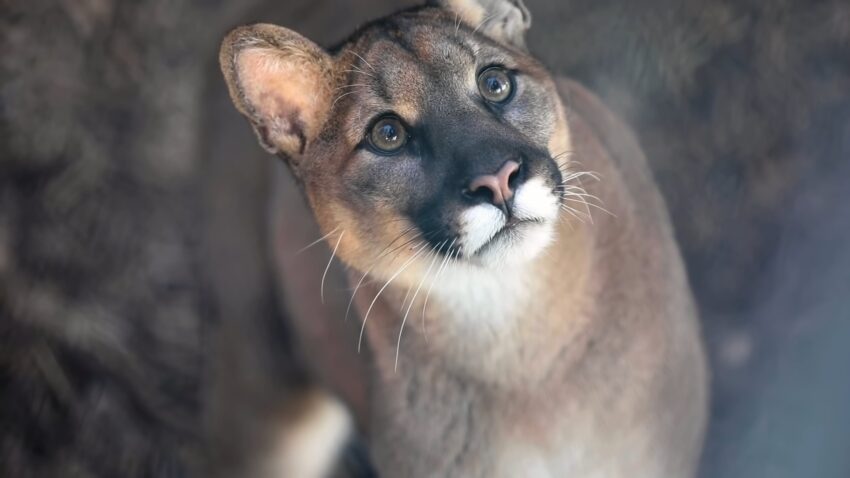
NEW MEXICO
A 2019 Associated Press article reported the Mountain Lion population to be approximately 4,353. A state report estimated the minimum population for 2020-2024 to be around 3,512. New Mexico utilizes advanced methods such as motion-capture cameras, mathematical models, and GPS collaring to track the elusive lions. The state also harvests specific numbers of cougars annually to control the population.
COLORADO
Colorado has long been home to Mountain Lions, whose presence is essential to the state’s ecosystem. The mountainous terrain and beautiful wilderness provide ideal habitats for these big cats. Colorado has an estimated 3,000 to 7,000 Mountain Lions, making it one of the states with the highest Mountain Lion population in the United States, along with California.
MONTANA
After a history of overhunting, Montana’s Mountain Lion population has rebounded. While the Montana Fish, Wildlife & Parks department is hesitant to provide exact numbers due to the need for improved tracking methods, their 2019 estimate was around 4,000 to 4,500 Mountain Lions. Bounties for killing Mountain Lions in Montana began in 1879 and continued for several decades, severely impacting the population. In 1971, they were classified as “game animals,” allowing the state to regulate hunting. The increasing numbers of deer and elk have also helped the lion population recover slowly.
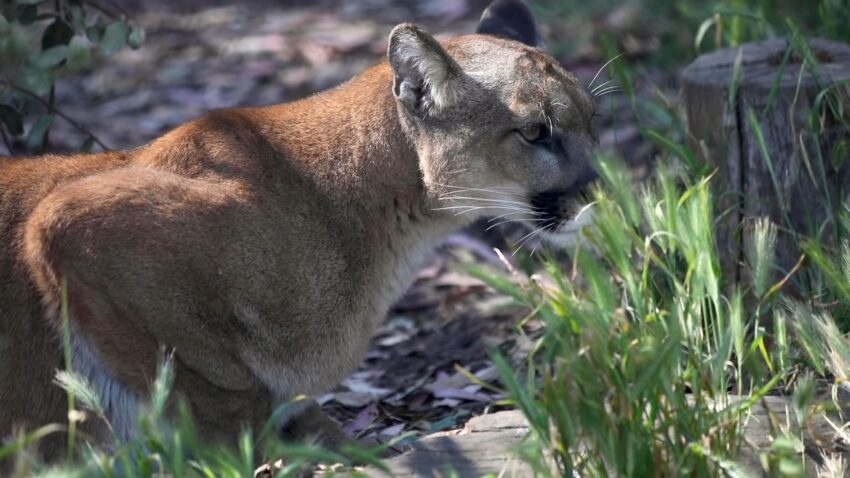
WYOMING
Wyoming is home to an estimated 2,000 Mountain Lions. In recent years, the population in some areas has declined significantly due to a “perfect storm” of reintroduced gray wolves, increased elk hunting, and increased Mountain Lion hunting. The state is debating whether to suspend Mountain Lion hunting until the population numbers increase.
IDAHO
Mountain Lions are commonly found throughout Idaho and have been observed in every county. The population is estimated to be around 2,000. Hunting Mountain Lions is legal in Idaho, but strict guidelines apply to the quantity and gender of the animals that can be taken.
UTAH
Utah has approximately 2,500 Mountain Lions. Hunting is allowed, with the state controlling the number of allowed harvests each year.
ARIZONA
Mountain Lions are found throughout Arizona, and data indicates that the populations are not only stable but growing. The current estimate is 2,000 to 2,700 across Arizona. The most common areas to spot Mountain Lions are in rocky and mountainous terrains. Hunting is legal but closely regulated by the state.
NEVADA
Mountain Lions were once thought to be relatively rare in Nevada, but their numbers increased alongside the deer population in the 1930s and 40s. Estimates vary, but the most recent approximation suggests there are around 2,000 Mountain Lions. According to the Nevada Department of Wildlife, “In Nevada, lions are found in areas of pinion pine, juniper, mountain mahogany, ponderosa pine, and mountain brush. Lions generally are most abundant in areas where deer are plentiful.”
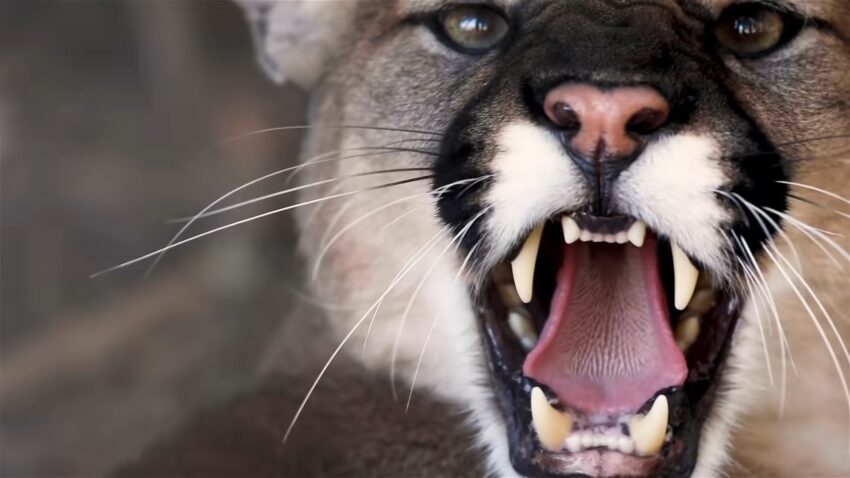
WASHINGTON
Washington is home to approximately 1,500 Mountain Lions, distributed throughout the state except for a pocket around the Columbia River basin. As the human population in some areas, particularly western Washington, increases, encounters may become more common. However, cougar attacks remain rare, with only two maulings in the past century.
FLORIDA
Florida is home to a subspecies of Mountain Lion called the Florida Panther, which is considered the only breeding cougar species in the eastern U.S. Florida Panthers were listed as endangered in 1967, and a long-term plan was enacted in 2008 to protect and grow the population. Currently, they are only found around the Caloosahatchee River and southwest of Lake Okeechobee in southern Florida. In 2017, the population was estimated to be between 120 and 230 Panthers.
SOUTH DAKOTA
The majority of South Dakota’s Mountain Lions can be found in the Black Hills region, with an estimated population of 300 to 500 lions. Smaller populations are also present in other parts of the state, but the exact numbers are unclear.
NEBRASKA
Mountain Lions were eliminated from Nebraska by the late 1800s, and it wasn’t until the 1990s that they began to return. Currently, three areas in Nebraska have living and breeding Mountain Lion populations: Pine Ridge, Niobrara River Valley, and Wildcat Hills. As of 2019, the population in Pine Ridge was estimated at 34. The Niobrara River Valley and Wildcat Hills populations are relatively new, and no population estimates have been made yet. The Nebraska Game & Parks Commission is committed to tracking and controlling the population to maintain it at an optimal level.
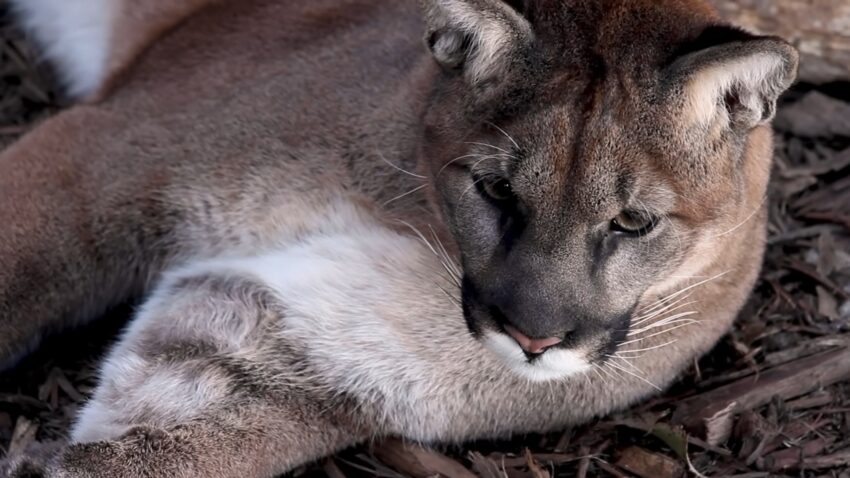
ARKANSAS
Although Mountain Lions were considered rare in Arkansas after 1920, it appears they are making a comeback. With a few confirmed sightings each year, it is estimated that there may currently be about 20 to 30 in the state. Arkansas has a large feral hog population, and this abundant prey might be one reason Mountain Lion populations are gradually increasing.
NORTH DAKOTA
While much of North Dakota is open prairie habitat that cannot support many Mountain Lions, they do reside in the more mountainous western parts of the state. As of 2020, the state does not provide population estimates but instead examines overall trends, concluding that the population has been relatively stable. Recent confirmed sightings of Mountain Lions in North Dakota are about 20 to 40 per year.
ABOUT MOUNTAIN LIONS
Historically, mountain lions inhabited nearly all regions of North and South America. Indigenous people on both continents held the big cats in high regard and created numerous legends and stories about them. European settlers, however, viewed mountain lions as valuable hunting targets and threats to their livestock.
As a result of hunting and habitat loss, mountain lions were eradicated from the eastern United States by the early 20th century, and their numbers declined severely in other areas. Nevertheless, legal changes, conservation efforts, and protections have allowed the mountain lion population to recover in some western states. With the abundant deer population (a favorite prey of cougars), experts believe that mountain lions could potentially return to their historic eastern range if sufficient habitat is available.
HABITAT
Mountain lions are highly adaptable to various environments, enabling their widespread distribution across North and South America. They can thrive in different types of forests, canyonlands, lowland and mountainous deserts, dense brush, and even open areas with minimal cover. Rather than forming packs, mountain lions are solitary creatures, with only a few able to coexist peacefully within a 30-square-mile range. This makes the availability of suitable land one of the primary factors limiting their population.
RANGE
Cougars’ adaptability to diverse habitats allows them to have an extensive range, from the northern Yukon in Canada to the southern Andes in South America. In the United States, they were eliminated from most states east of the Mississippi River within 200 years of European colonization. Today, their U.S. range is primarily concentrated in the western states, with a small population in southern Florida. Evidence suggests that these western mountain lions are gradually moving eastward and may re-establish populations in central and eastern states.
DIET
Deer and elk are the preferred prey for mountain lions. They employ stealthy hunting tactics, frequently ambushing their prey from behind during dawn, dusk, or nighttime hours. An adult cougar typically consumes one deer per week, but they will also hunt feral pigs, raccoons, rodents, porcupines, and even coyotes. If the prey is too large to eat in one sitting, they will often drag it to a hidden location and cover it with pine needles, grass, or dry leaves to conceal it from other predators or scavengers. This behavior may also slow down the meat’s spoilage, allowing them to return and feed on the carcass throughout the week.
SIZE
Mountain lions are the world’s fourth-largest cat species, following lions, tigers, and jaguars.
Length (nose to tail tip): Males 7.9 ft, Females 6.7 ft. Tails make up about 25-35% of their total body length. Height (at the shoulder): 24-35 inches Weight: Males 117-220 pounds, Females 64-141 pounds Mountain lions at the poles are larger than those at the equator. Their coat color can also vary by location, ranging from sandy brown to reddish brown, or even silvery-light gray. Regardless of the color, their coats remain uniform with no spots, stripes, or patterns.
MATING
Although many animals have specific breeding seasons, mountain lions can mate throughout the year. Males and females only interact during the short period when they choose to breed. Usually quiet, the cats will emit loud screaming sounds during this time. It is believed that these noises are made by females to signal that they are in heat and ready to mate, while males scream to attract females over competing males.
Females typically give birth once every two years, with an average litter size of three cubs, although it can range from one to six. Born small and blind after 90 days of gestation, cubs are hidden by their mother in dense vegetation for approximately 40-70 days. Males play no role in the cubs’ lives once they are born. Cubs remain with their mother for about 10-26 months. Unfortunately, it is common for at least one cub in a litter to die before reaching the age of two. However, those that survive to 48 months will start to disperse, seeking their own home range.
SUBSPECIES
Although all mountain lions belong to the species Puma concolor, there has been ongoing debate over the number of subspecies that exist across the cougar’s vast range. At one time, over 30 subspecies were recognized, but advances in DNA testing have shown that many are not genetically distinct enough to be considered separate subspecies. In 2005, six subspecies were acknowledged:
- puma
- cougar
- costaricensis
- anthonyi
- cabrerae
- concolor
Opinions among scientists vary, with some believing that only a few of these subspecies are valid distinctions. As more sophisticated and extensive DNA testing is conducted, this list is likely to continue evolving.
FAQ
Where were mountain lions historically found?
Mountain lions were historically found throughout nearly all of North and South America. They were revered and had much admiration and folklore surrounding them among the native people of both continents.
What caused the decline in mountain lion populations in the eastern United States?
The decline in mountain lion populations in the eastern United States was due to hunting and habitat loss caused by European settlers, farmers, and ranchers.
How have mountain lion populations rebounded in some western states?
Changes in laws, protections, and conservation efforts have helped mountain lion populations rebound in some western states.
What types of habitats do mountain lions inhabit?
Mountain lions are adaptable and can live in various environments, such as forests, canyonlands, lowland and mountainous deserts, dense brush, and open spaces with little cover.
What is the current range of mountain lions in the United States?
In the United States, mountain lions are mainly found across the western states, with a small population in southern Florida. There is evidence that they are slowly spreading east and may recolonize the middle and eastern states.
What do mountain lions eat, and how do they hunt?
Mountain lions primarily prey on deer and elk, but they will also hunt feral hogs, raccoons, rodents, porcupines, and even coyotes. They hunt by stealth, often at dawn/dusk or at night, and will surprise their prey from behind in an ambush.
How large are mountain lions, and what are their physical characteristics?
Mountain lions are the fourth largest cat species in the world, with males measuring 7.9 ft and females 6.7 ft in length. They stand 24-35 inches tall at the shoulder, and males can weigh between 117-220 pounds, while females weigh 64-141 pounds. Their coat color varies with location, ranging from sandy brown to reddish brown, or silvery-light gray.
How do mountain lions reproduce, and what is their life cycle?
Mountain lions can breed year-round. The female gives birth once every two years to a litter of one to six cubs, which are born after 90 days of gestation. Cubs are kept hidden for about 40-70 days, and they stay with their mother until they are 10-26 months old. At around 48 months, the surviving cubs disperse to find their own home range.
How many subspecies of mountain lions exist?
There has been debate over the number of mountain lion subspecies. In 2005, six subspecies were recognized, but some scientists argue that only a few of these are valid distinctions. The list may continue to evolve as more DNA testing is performed.
Conclusion
Mountain lions are fascinating and adaptable big cats that have experienced population declines due to hunting and habitat loss. However, through conservation efforts, they are rebounding in some areas. Understanding their biology, habitat, and behavior can help us better protect these majestic creatures.
Related Posts:
- 10 Best States with Most Dogs in US 2024 - Ultimate Ranking
- 14 Best States to Explore Your Hunting Passion 2024:…
- THC Gummies: What to Know Before Taking Them for the…
- 10 Most Popular Cars In California 2024: The Hottest…
- Top 10 Best Most Beautiful Cities in Europe To Visit…
- Get Ready for a Rocky Mountain Adventure: The Best…

